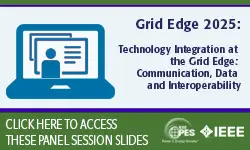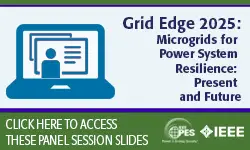Slides for: Smart Contracts in Energy Systems
Desen Kirli, Benoit Couraud, Valentin Robu
-
Members: FreeSponsoring Society
IEEE Members: $11.00
Non-members: $15.00Pages/Slides: 35
13 Oct 2022
Virtual Summation Meters in Smart Grids Learning objectives- 1. To understand the concept of virtual energy meters. 2. To understand the concept of virtual summation meters. 3. To understand the significant role of summation meters in smart grids. The summation meters perform summation of consumptions recorded by meters provided at outgoing feeders emanating from bus at substations in smart grids. The convention meters are physical meters. In the advent of Virtual Summation Meters, entire meter data can be visualized on computers. Thus, the utility engineer can monitor this data on his or her laptop or mobile phone from any place in the world. The virtual energy meters are basically IoT enabled meters. The summation of consumptions is performed using Python TensorFlow libraries. Given the ongoing transition towards a more decentralised energy system, the potential of blockchain-enabled smart contracts for the energy sector is being increasingly recognised. Due to their self-executing and tamper-proof nature, they are a key technology for enabling the transition to a more efficient, transparent and transactive energy market. Their applications include coordination of smart electric vehicle charging, automated demand-side response, peer-to-peer energy trading and allocation of control duties amongst the network operators. Nevertheless, their use in the energy sector is still in its early stages as there are many challenges related to security and scalability. In this webinar, we reflect our findings from the systematic review of 178 peer-reviewed publications and 13 innovation projects. This webinar offers a broad perspective on the opportunities and challenges that stakeholders using this technology face, in current and emergent markets. We demonstrate a systematic model of the smart contracting process, by using our novel 6-layer architecture, and share our open-source sample energy contract code. We focus on two mainstream application areas identified as; energy and flexibility trading, and distributed control. The webinar concludes with a critical discussion of the challenges and a set of recommendations that researchers should consider when applying smart contracts in energy systems.


